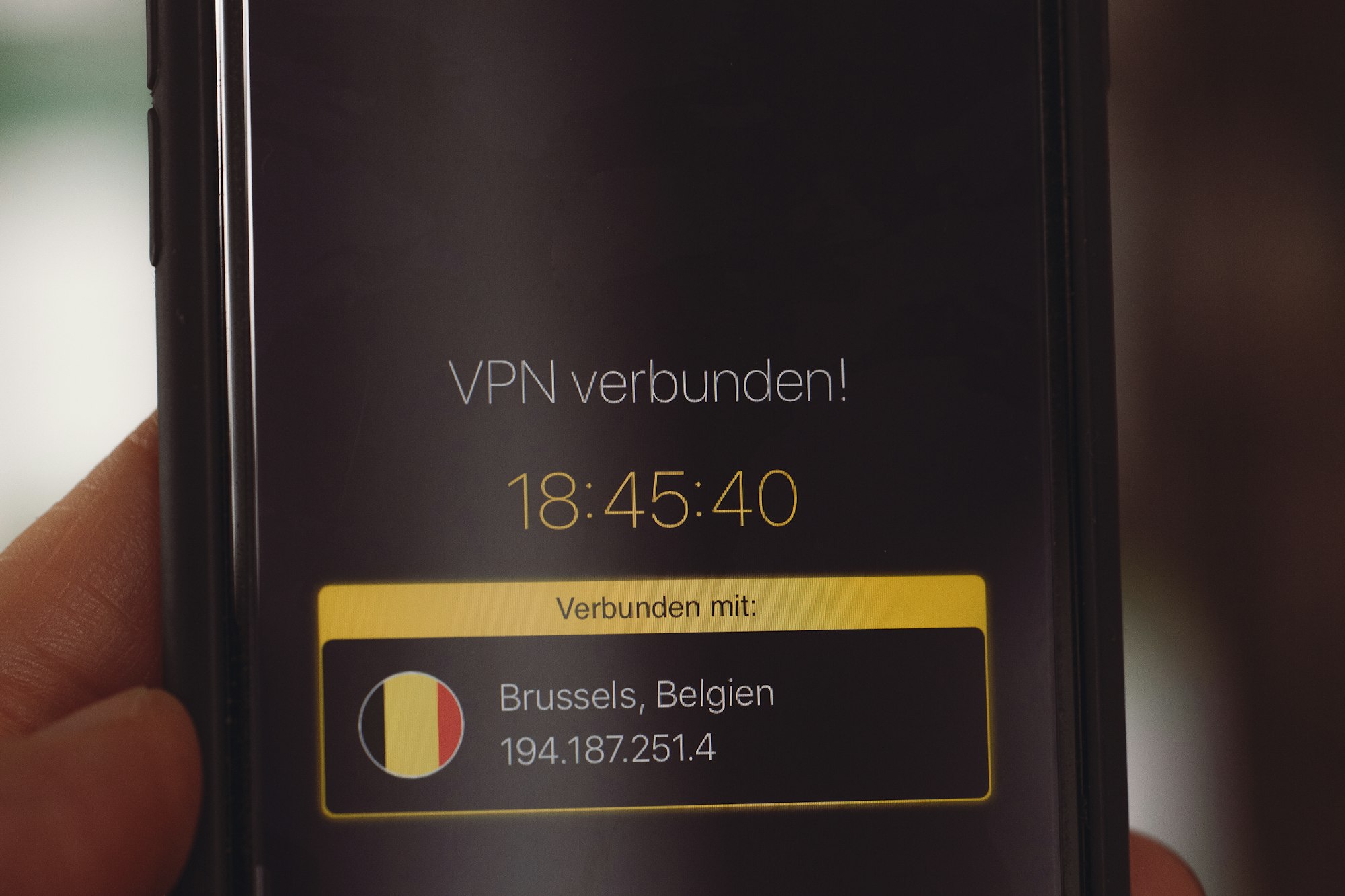The key factor that separates a minor security issue from a major data breach is often how quickly you can detect the problem. When cyber threats gain access to your network, steal sensitive data, or disrupt your operations, every minute matters.
This article will provide you with the knowledge you need to spot the subtle signs of a cybersecurity breach before it becomes a bigger problem. You'll learn how to identify the warning signs of unauthorized access, understand the strategies used by cybercriminals to stay hidden, and discover why early detection is crucial in preventing significant financial losses and damage to your reputation.
Being able to recognize these signs could be the deciding factor between an incident that is quickly resolved and a full-blown security disaster that makes headlines for all the wrong reasons.
Understanding Cybersecurity Breaches
Cybersecurity breaches can happen in different ways, each targeting specific weaknesses in your digital systems.
Types of Cybersecurity Breaches
- Unauthorized access : This is one of the most common threats where attackers gain entry into systems using stolen passwords or exploiting security flaws. These breaches often go unnoticed for long periods, giving cybercriminals time to establish a strong presence in your network.
- Data tampering : Instead of stealing information, some attacks focus on manipulating or destroying critical data. Attackers may modify records in databases, alter financial transactions, or insert harmful code into legitimate files. Such actions can severely damage the trustworthiness of your information systems.
- Distributed Denial of Service (DDoS) attacks : These attacks overwhelm your network by bombarding servers with an enormous amount of traffic, making them inaccessible to genuine users. DDoS attacks can also serve as distractions for more advanced intrusion attempts.
How Cybercriminals Carry Out These Attacks
- Brute-force attacks : In this basic method, automated tools try out numerous password combinations on user accounts until they find the right one. Attackers typically target weak passwords, default credentials, and accounts without multi-factor authentication enabled.
- Social engineering : Instead of relying solely on technical vulnerabilities, cybercriminals manipulate individuals to gain access. They may use tactics such as phishing emails with malicious links or attachments, impersonating trusted figures through pretexting scenarios, or exploiting curiosity/urgency through baiting techniques.
These psychological manipulation methods often bypass traditional security measures by convincing users to willingly share their login details or install harmful software. Attackers frequently combine various tactics, using social engineering to gather information that enhances the effectiveness of technical assaults on your systems.
Common Signs of a Cybersecurity Breach
Recognizing the signs of cyber attack early can mean the difference between a minor security incident and a catastrophic data breach. You need to stay vigilant for specific indicators that suggest cybercriminals have infiltrated your systems or are actively attempting to do so.
Network and User Activity Anomalies
Unusual network activity often serves as the first red flag of a potential breach. You might notice employees accessing systems at odd hours, logging in from unfamiliar locations, or attempting to access files and applications outside their normal job responsibilities. Failed login attempts from multiple IP addresses within short timeframes typically indicate automated attack tools targeting your user accounts.
User behavior patterns that deviate from established baselines deserve immediate attention. When employees suddenly download large volumes of data, access sensitive databases they've never touched before, or exhibit browsing patterns inconsistent with their role, these behaviors could signal compromised credentials or insider threats.

Infrastructure and Data Integrity Issues
Unauthorized changes to your network infrastructure represent serious security violations. You may discover new user accounts created without proper authorization, modified firewall rules that weren't approved through change management processes, or altered system configurations that compromise security controls.
Data modifications without corresponding work orders or legitimate business justification indicate potential tampering. Files with unexpected timestamps, corrupted databases, or missing records often point to malicious activity. You should pay particular attention to changes in critical system files, registry entries, or configuration databases.
Performance Degradation Patterns
System performance issues frequently accompany active cyber attacks. Slow internet connections, bandwidth consumption spikes during off-hours, or applications running sluggishly without apparent cause may indicate DDoS attacks or data exfiltration in progress. Network latency increases and unexpected server resource utilization often reveal unauthorized processes consuming system resources.
Multiple locked user accounts appearing simultaneously suggest brute-force attacks targeting your authentication systems. You'll typically see patterns of failed login attempts followed by automatic account lockouts across various user profiles.
Traffic and Communication Anomalies
Abnormal outbound traffic patterns reveal unauthorized data transfers. Large file uploads to unknown external servers, encrypted communications to suspicious IP addresses, or data flowing to geographic locations where your organization doesn't conduct business warrant immediate investigation.
The Importance of Early Detection and Monitoring in Cybersecurity
Breach detection importance cannot be overstated in today's threat landscape. When you detect a cybersecurity incident within the first few hours, you dramatically reduce potential damage. Statistics show that organizations identifying breaches within 200 days save an average of $1.12 million compared to those taking longer to discover incidents.
The window between initial compromise and full-scale damage represents your most critical opportunity. Cybercriminals often establish persistence in systems before launching destructive activities. Early detection allows you to :
- Contain the threat before sensitive data leaves your network
- Preserve forensic evidence for investigation and legal proceedings
- Minimize operational disruption to business-critical systems
- Reduce recovery costs by limiting the scope of compromise
Best Practices for Proactive Monitoring
Monitoring user activity requires systematic approaches that balance security with operational efficiency. You should implement continuous surveillance of user accounts through automated tools that flag anomalous behavior patterns.
Essential monitoring practices include :
- Real-time log analysis using SIEM (Security Information and Event Management) platforms like Splunk or IBM QRadar
- Behavioral analytics that establish baseline user patterns and alert on deviations
- Privileged account monitoring with enhanced scrutiny on administrative access
- Network traffic analysis to identify unusual data flows or communication patterns
Regular access log reviews should occur daily for high-privilege accounts and weekly for standard users. You can leverage machine learning algorithms to automate anomaly detection, reducing false positives while maintaining vigilant oversight.
Cybersecurity monitoring extends beyond automated systems. Your security team needs defined escalation procedures and clear thresholds for investigating suspicious activities. This human element ensures context-aware decision-making when automated systems flag potential threats.
Strategies to Prevent Cybersecurity Breaches from Happening in the First Place
Breach prevention strategies form the cornerstone of effective cybersecurity defense. You need a multi-layered approach that addresses vulnerabilities before attackers can exploit them.
1. Implement Multi-Factor Authentication (MFA)
Multi-Factor Authentication (MFA) serves as your first line of defense against unauthorized access. When you implement MFA across all systems, you create an additional barrier that makes it significantly harder for cybercriminals to compromise accounts, even with stolen credentials. This simple yet powerful tool can prevent up to 99.9% of automated attacks.
2. Keep Software Up-to-Date
Regular software updates and patch management eliminate known vulnerabilities that hackers frequently target. You should establish automated update schedules for operating systems, applications, and security software. Unpatched systems represent low-hanging fruit for cybercriminals who scan networks specifically for these weaknesses.
3. Educate Your Employees
Employee education and training programs address the human element of cybersecurity. You must train your staff to recognize phishing emails, social engineering attempts, and suspicious links. Regular training sessions and simulated phishing exercises help build a security-conscious culture where employees become active participants in your defense strategy.
4. Segment Your Network and Control Access
Network segmentation and access controls limit the potential damage from successful breaches. When you implement zero-trust architecture, you ensure that users and devices only access resources necessary for their specific roles. This approach contains threats and prevents lateral movement across your network.
5. Monitor Your Network with Firewalls and Intrusion Detection Systems
Robust firewall and intrusion detection systems monitor network traffic for malicious activity. You should deploy both network-based and host-based solutions that can identify and block suspicious behavior in real-time. These systems act as sentries, constantly watching for signs of unauthorized access attempts or data exfiltration.
Building a Comprehensive Cybersecurity Program for Long-Term Resilience Against Breaches
Cybersecurity program development requires a strategic approach that goes beyond reactive measures. You need to establish a framework that anticipates threats and builds resilience into your organization's digital infrastructure.
Essential Program Components
Your cybersecurity program should include these foundational elements :
- Risk Assessment and Management - Conduct regular evaluations of your digital assets, identifying potential vulnerabilities and prioritizing threats based on their potential impact
- Vulnerability Assessment Protocols - Schedule quarterly penetration testing and automated vulnerability scans to discover security gaps before attackers exploit them
- Incident Response Planning - Develop detailed procedures that outline specific roles, communication channels, and containment strategies for different breach scenarios
- Security Awareness Training - Implement ongoing education programs that keep employees informed about emerging threats and social engineering tactics
Proactive Security Measures
Regular vulnerability assessments serve as your early warning system. These evaluations help you identify weak points in your network infrastructure, applications, and user access controls. You should document findings and track remediation efforts to ensure continuous improvement.
Your incident response plan must be tested regularly through tabletop exercises and simulated breach scenarios. This preparation enables your team to respond swiftly when real threats emerge, reducing potential damage and recovery time.
Governance and Compliance Framework
Establish clear policies for data handling, access controls, and security protocols. Regular audits ensure your program remains effective and compliant with industry regulations. You should designate specific team members responsible for monitoring, updating, and enforcing these security standards across your organization.
Responding Effectively After Detecting a Breach: Steps Organizations Should Take Immediately
When you detect signs of a cybersecurity breach, your response speed directly impacts the extent of damage to your organization. The first critical step involves immediate containment to prevent attackers from accessing additional systems or exfiltrating more sensitive data.
Contain the Breach
Your IT team should isolate affected systems from the network while preserving evidence for forensic analysis. This means disconnecting compromised devices without shutting them down completely, as powering off systems can destroy valuable RAM data that investigators need to trace the attack vector.
Document Everything
Document everything from the moment you discover suspicious activity. Create detailed logs of :
- Time stamps of unusual activities
- Affected systems and user accounts
- Network traffic patterns observed
- Actions taken during the response
Notify Your Team and Stakeholders
Contact your incident response team immediately and notify relevant stakeholders according to your breach response plan importance protocols. You need to determine whether law enforcement involvement is necessary, especially if customer data or regulated information appears compromised.
Manage Communication
Activate your communication strategy to manage internal messaging while avoiding premature external disclosure that could alert attackers to your detection efforts.
Analyze the Breach
Your cybersecurity team should begin forensic analysis to identify the attack method, scope of compromise, and potential data exposure.
Secure Your Systems
Change all administrative passwords and revoke access credentials for affected accounts. Deploy additional monitoring tools to track any continued malicious activity across your network infrastructure.
The effectiveness of your immediate response relies heavily on having practiced these procedures through regular incident response drills. Organizations with well-rehearsed cybersecurity protocols typically contain breaches 200 days faster than those without structured response plans, significantly reducing financial and reputational damage.
Conclusion
Cybersecurity threats continue to evolve, making individual vigilance more critical than ever. You have the power to protect your digital assets through consistent awareness and proactive measures. Every click, download, and login decision contributes to your organization's security.
The importance of cybersecurity awareness cannot be overstated—you are the first line of defense against sophisticated cyber attacks. Your ability to recognize suspicious emails, unusual system behavior, and potential breach indicators directly impacts your organization's resilience against threats.
Building strong security habits requires dedication :
- Monitor your accounts regularly for unusual activity
- Report suspicious behavior immediately to IT teams
- Maintain updated passwords and enable multi-factor authentication
- Stay informed about emerging cyber threats and attack methods
Your commitment to cybersecurity best practices creates a protective shield around sensitive data and critical systems. The investment you make in security awareness today prevents costly breaches tomorrow. Remember, cybersecurity is not just an IT responsibility—it's everyone's responsibility. Your vigilance and proactive approach to digital security make the difference between a secure environment and a compromised one.
FAQs (Frequently Asked Questions)
What are the common types of cybersecurity breaches organizations should be aware of ?
Common types of cybersecurity breaches include unauthorized access to systems, data tampering, Distributed Denial of Service (DDoS) attacks, brute-force attacks, and social engineering tactics. These breaches can compromise network infrastructure and sensitive data.
What are the key signs that may indicate a cybersecurity breach is occurring ?
Key indicators of a cybersecurity breach include unusual network and user activity such as suspicious account access or abnormal behavior, unauthorized changes to critical files or network infrastructure, unexplained data modifications, performance issues like slow internet or bandwidth drops, multiple locked user accounts from brute-force attempts, abnormal outbound traffic suggesting unauthorized data transfers, device tampering signs like unexpected pop-ups or fake antivirus alerts, and abnormal administrative activities such as excessive access to sensitive information or sudden permission changes.
Why is early detection and monitoring crucial in preventing damage from cybersecurity breaches ?
Early detection and continuous monitoring of user accounts and access logs allow organizations to identify anomalies promptly. Recognizing signs of a breach early minimizes potential damage by enabling swift containment and response efforts before the attack escalates.
What strategies can organizations implement to prevent cybersecurity breaches effectively ?
Organizations can strengthen their defenses by adopting comprehensive preventive measures such as enforcing strong password policies, conducting regular vulnerability assessments, implementing multi-factor authentication, educating employees on phishing and social engineering risks, maintaining updated security software, and establishing strict access controls.
How can organizations build a comprehensive cybersecurity program for long-term resilience against breaches ?
A robust cybersecurity program includes proactive components like regular vulnerability assessments, incident response planning, continuous employee training on security best practices, implementation of advanced monitoring tools to detect anomalies early, and updating security policies to adapt to evolving cyber threats.
What immediate steps should an organization take after detecting a cybersecurity breach ?
Upon detecting suspicious activity indicating a breach, organizations should immediately activate their incident response plan which includes containing the breach to prevent further damage, assessing the scope of the compromise, notifying relevant stakeholders, preserving evidence for investigation, and initiating recovery procedures to restore affected systems securely.









